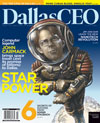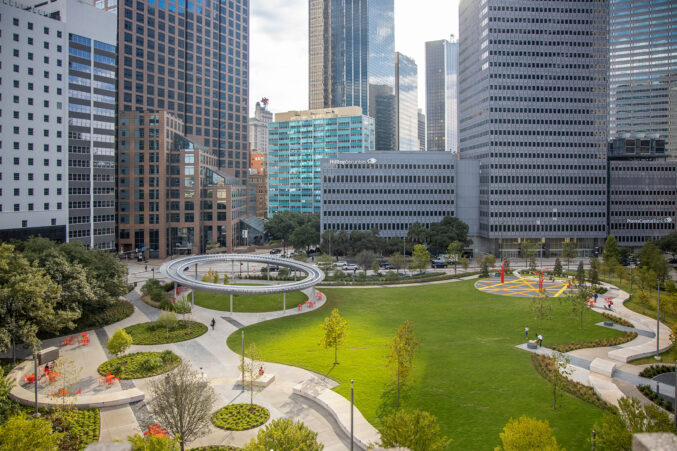Real estate developers are to local politics what oil company executives are to national politics: punching bags. The caricature is so commonplace I don’t even need to read the Dallas Observer to draw it. Real estate developers are greedy. They kick widows and orphans out of their homes. They manipulate zoning laws. They steal from the public purse with tax abatements and special tax districts.
When I’m in the right mood, it almost amuses me. I’m sure those same detractors have roamed the streets in Uptown, enjoyed a cup of java in the West Village, and even cheered the Mavs at American Airlines Center. I have spotted Mayor Laura Miller taking in a movie with her family at the Angelika at Mockingbird Station.
Hmm, I wonder where those places came from?
Robert Shaw is a former Cowboys center who, with a bum knee, began his building career by tacking roofs for a Roger Staubach development in Addison. The summer sun must have addled Shaw’s brain, because he started thinking about young people moving to Dallas and the kind of neighborhood they might like to live in. Somehow he had gotten his hands on a copy of Jane Jacobs’ 1961 classic, The Death and Life of Great American Cities. Shaw took Jacobs’ message—narrow streets, front doors only feet from the curb, diverse architecture, small retail—to heart.
Nobody he approached had the slightest idea of what he was talking about. It took him years to convince lenders and investors, to corral the city staff, to purchase land, and to wheedle the proper zoning out of a skeptical City Council. It took him more years to establish a Tax Increment Financing district, so that money would go into making more improvements to the neighborhood.
Only a slightly crazed mind would have taken the risk, borne the disappointments, and persevered through the red tape and the endless demands from lenders. The result is Uptown, arguably the most popular multi-unit neighborhood in Dallas.
I remember the meeting in Henry Miller III’s office when he and Robert Bagwell first showed me the plans for West Village. Henry and Robert were passionate, but it was hard for them to conceal that they were also nervous. So were their backers. Nothing like it had ever been tried before in Dallas: a shopping center that wasn’t exactly a shopping center but more like an urban oasis, with residents living above restaurants and bars and across from a movie theater. Compromises, cutbacks, restrictions, and concessions finally brought it into existence—and from the very first night it was packed.
Ken Hughes was also slightly crazed. For more than a decade, he was the only person in Dallas who saw how light rail would change people’s behavior. Before the DART plan was off the drawing board, he started imagining a compact, multi-use environment tied to a station on the east side of Central, where nobody was building anything. Ken took the risk, suffered a big loss when his vision outran his budget, but got Mockingbird Station built. Laura Miller and her family, along with thousands of others, got the payoff.
There are scores of others—John Sughrue, Harlan Crow, Ross Perot Jr., Tom Hicks, Jeff Swope, Ray Hunt, the late Chip Johnson—guys whose passion and salesmanship and willingness to take risks have taken this city in 10 years from a nearly dead, soulless patch of concrete and skyscrapers to a lively, fun-filled city.
Punching bags? We ought to build monuments to them.





